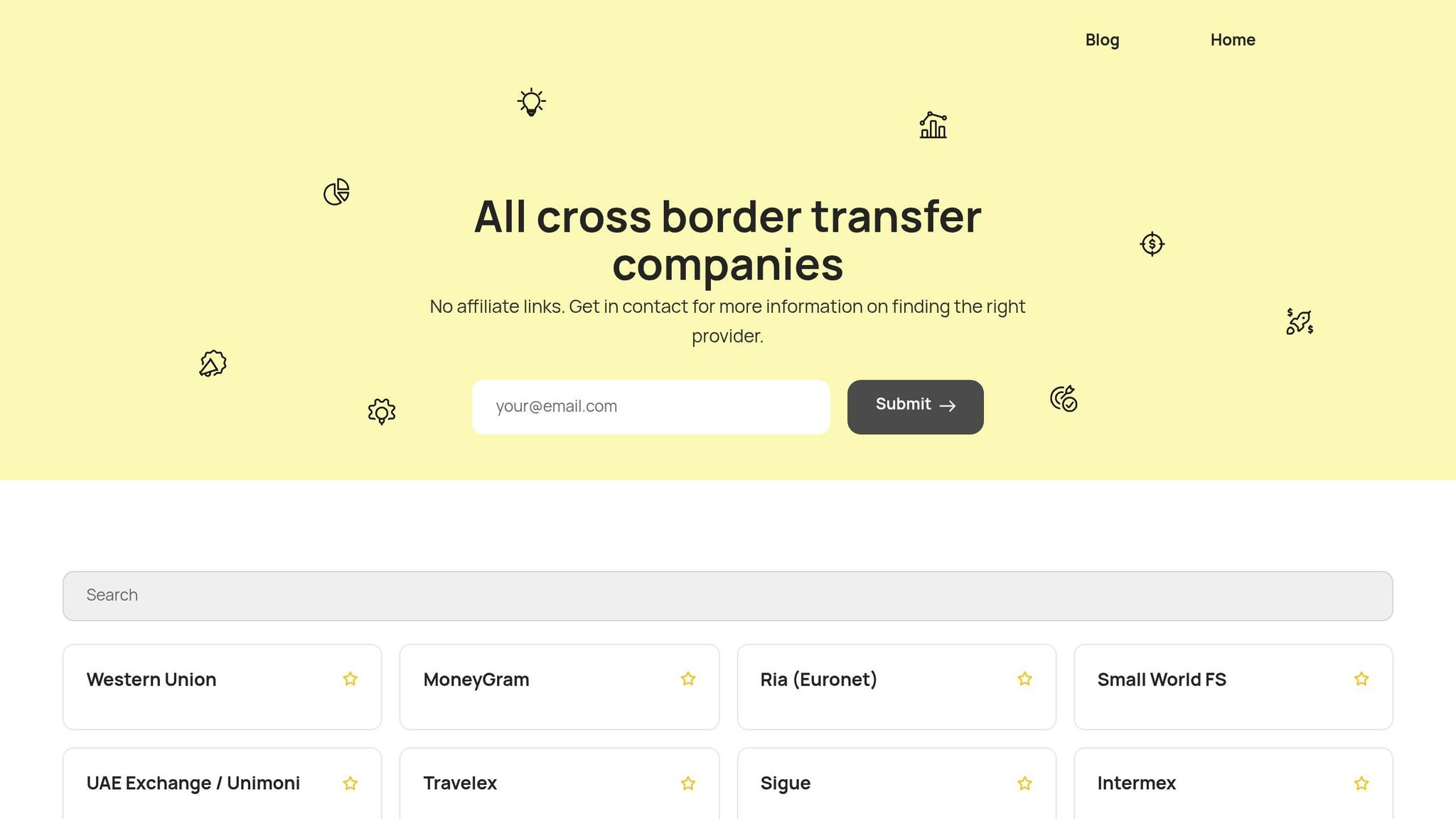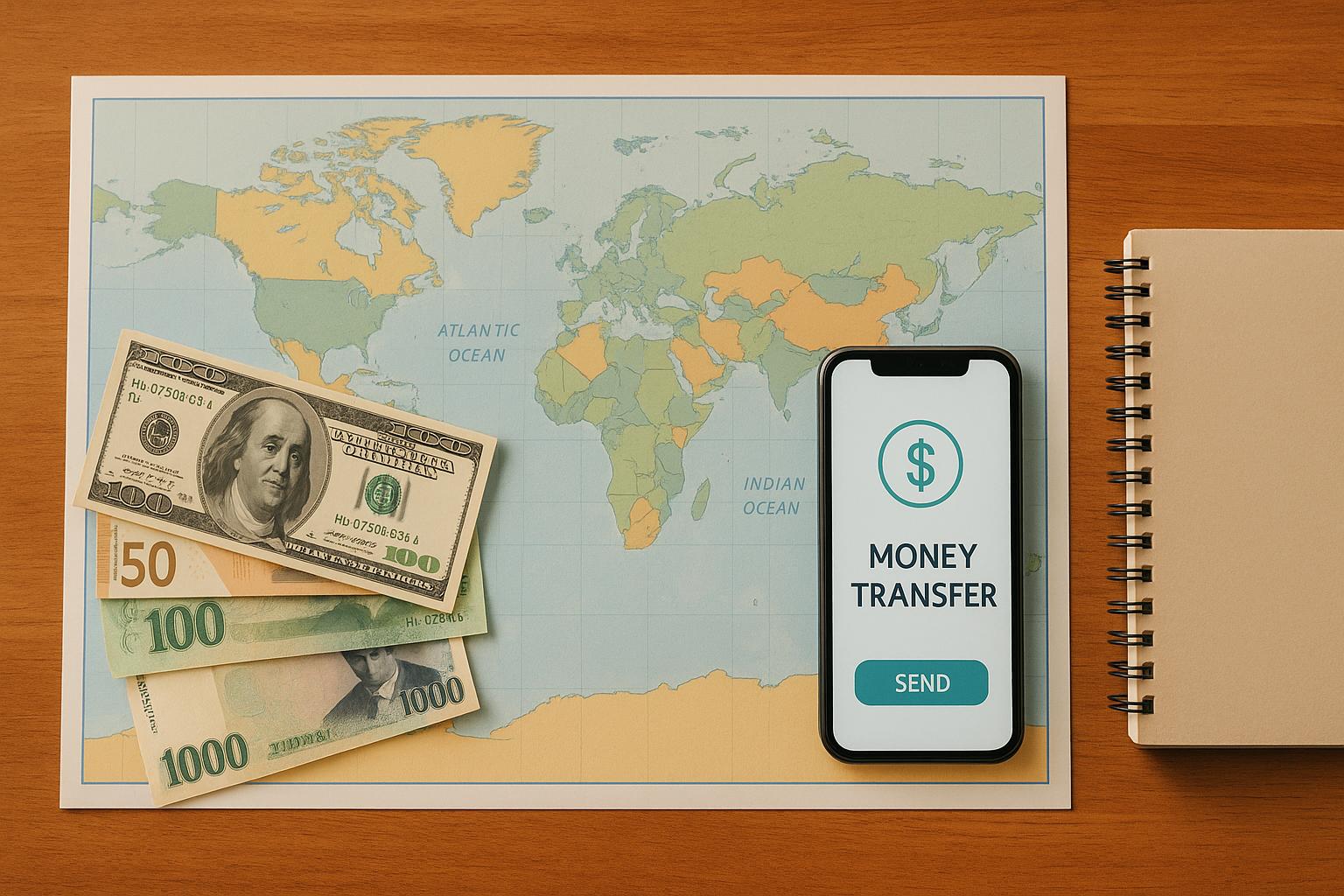Multi-currency payment processing allows businesses to accept payments in various currencies while settling them in their preferred one. This system simplifies global transactions by handling currency conversions, exchange rates, and compliance requirements. It helps reduce cart abandonment, improves customer trust, and streamlines international operations.
Key Benefits:
- Customers can pay in their local currency, reducing friction and improving trust.
- Businesses can hold funds in multiple currencies to manage supplier payments and exchange rate risks.
- Faster settlements (1-2 business days) compared to traditional methods.
Challenges:
- Exchange rate volatility can affect profit margins.
- High transaction fees and compliance with global regulations add complexity.
- Managing multiple accounts and reconciling payments across currencies can strain resources.
How It Works:
- Customers select their local currency at checkout.
- Payment gateways convert the price using live exchange rates.
- Transactions are authorized and routed efficiently.
- Funds are settled in either the customer's or merchant's currency.
For businesses, selecting the right payment gateway is crucial. Look for features like real-time conversion, fraud detection, and compliance support. Tools like Cross Border Payments Companies can help compare providers based on fees, supported currencies, and API capabilities.
Takeaway: Offering multi-currency payment options can improve international sales, reduce operational hurdles, and enhance customer satisfaction. Start by evaluating your current payment system and exploring providers that align with your global needs.
Why Multi-Currency Processing Is the Way to Go for Merchants Entering New International Markets
How Multi-Currency Payment Processing Works
Understanding how multi-currency payment processing operates can help businesses navigate exchange rates and payment authorizations more effectively. By mastering these steps, businesses can reduce conversion risks and provide a smoother experience for their customers.
Steps in Multi-Currency Payment Transactions
The process begins when a customer selects a product and opts to pay in their local currency during checkout. Payment systems identify the customer's location and automatically display prices in the relevant currency.
Once the currency is chosen, the payment gateway converts the amount using live exchange rates. This conversion typically includes a small markup or fee from the payment processor, which is transparently communicated to the customer before they complete their purchase. The exchange rate is locked in at the start of the transaction, ensuring the customer knows the exact amount they’ll pay.
After reviewing the total, which includes any conversion fees or international charges, the customer selects their preferred payment method and enters the necessary details. The system then processes the payment, connecting with banks and card networks to authorize the transaction in the chosen currency.
Once authorized, the transaction is routed through the most efficient path, considering factors like speed, cost, and reliability. This routing might involve local transfer networks that treat the payment as a domestic transaction or optimized international wire paths.
Finally, the funds are settled with the merchant. If the merchant's settlement currency differs from the payment currency, the amount is converted accordingly before being deposited.
Currency Conversion at Checkout
At the checkout stage, prices are converted instantly using live exchange rates. A small markup from the payment processor is applied, and the rate is locked in when the customer initiates the payment. This ensures transparency and consistency, so customers know exactly what they’re paying.
Payment Experiences for US Merchants
For US merchants, offering customers the ability to pay in their local currency can significantly enhance international sales. Payment systems can automatically detect a customer’s location and display prices in the appropriate currency, creating a more personalized shopping experience.
Merchants should also pay attention to regional preferences. For example, European customers often expect the currency symbol to follow the number (e.g., 100€), while in the US, the symbol typically comes before the amount (e.g., $100). Adapting to local pricing formats and date conventions on receipts and invoices can further improve clarity and customer satisfaction.
Including both the customer’s payment currency and the merchant’s settlement currency on receipts and confirmation emails adds another layer of transparency. Additionally, offering localized payment options, such as regional payment methods alongside traditional credit cards, ensures merchants can cater to diverse customer preferences.
These adjustments not only improve the customer experience but also set the stage for seamless integration with advanced multi-currency tools, which will be explored further in the next section.
Tools and Gateways for Multi-Currency Payment Integration
Multi-currency payment processing relies on sophisticated systems that handle everything from real-time currency conversion to meeting regulatory standards. By understanding these systems, businesses can make informed decisions when selecting solutions for international transactions.
Multi-Currency Payment Gateways
At the heart of global transactions are multi-currency payment gateways. These systems connect businesses with customers using various currencies and payment methods, managing the intricate processes of authorizing payments, converting currencies, and ensuring compliance with regulations.
Modern gateways enhance customer experience by detecting their location, displaying prices in local currencies, and processing transactions domestically whenever possible. This not only reduces fees but also improves approval rates, making transactions smoother for both merchants and customers.
Security is a cornerstone of these gateways. They must comply with PCI DSS standards and adhere to local regulations, such as anti-money laundering laws and Know Your Customer (KYC) protocols, to ensure safe and lawful processing of transactions. Additionally, fraud detection systems built into these gateways analyze transaction patterns to identify suspicious activities while minimizing false positives, ensuring legitimate customers aren't unintentionally blocked.
These gateways also integrate seamlessly with currency conversion engines, ensuring real-time accuracy in currency calculations.
Currency Conversion Tools and Algorithms
Currency conversion tools are essential for multi-currency processing. They determine exchange rates and manage conversions by pulling live rates from major financial sources, ensuring the latest data is used.
Real-time rate engines keep exchange rates updated throughout the day, sometimes refreshing every few seconds during volatile market periods. Most tools apply a margin or spread on top of the interbank rate to manage currency risks and generate revenue. These margins vary depending on the currency pair and transaction size.
To maintain consistency, advanced algorithms often use rate caching, which locks in exchange rates for a short period. This ensures that customers see consistent pricing during checkout, avoiding discrepancies between the displayed price and the final charged amount.
Some tools also offer hedging options, allowing businesses to manage currency risk through automated financial instruments when specific thresholds are triggered.
Once accuracy and reliability in currency conversion are established, US merchants must focus on integration to maximize these systems' benefits.
Integration Requirements for US Merchants
For US businesses, integrating multi-currency systems requires meeting specific technical, security, and reporting standards. This process often starts with establishing strong API connections, implementing security measures, and ensuring compatibility with existing systems.
Most modern payment platforms offer RESTful APIs, enabling merchants to customize the payment process while maintaining security through SSL certificates and API key authentication.
Merchants must ensure their systems support various currency formats, including proper decimal placements, currency symbol positioning, and regional number formatting. Additionally, these systems should integrate seamlessly with accounting software to record transactions accurately in both the customer's payment currency and the merchant's settlement currency.
Tax calculations add another layer of complexity. Systems must calculate taxes based on the customer's location and convert amounts between currencies accurately.
Robust reporting tools are also critical. Merchants need detailed reports that track transaction volumes by currency, conversion fees, and the impact of foreign exchange on overall revenue.
Finally, thorough sandbox testing is essential to confirm that rate updates, conversions, and integrations work as expected before going live.
sbb-itb-165eed9
Benefits and Challenges of Multi-Currency Payment Processing
Implementing multi-currency payment systems can redefine how businesses operate on a global scale. However, achieving success requires a clear understanding of both the opportunities and the obstacles involved. Companies must carefully evaluate the advantages and challenges to develop effective strategies for international payments. Let’s explore the key benefits and hurdles associated with these systems.
Business Benefits
Easier market expansion is one of the standout advantages. Allowing customers to pay in their local currencies removes psychological barriers to purchasing. Familiar currency symbols and the ability to avoid mental conversions make customers feel more comfortable and confident when shopping.
Transparent local pricing builds trust. When customers see clear pricing without hidden fees or surprises, they’re less likely to abandon their carts. This transparency fosters confidence throughout the buying process, ensuring customers know exactly what they’ll pay.
Automation simplifies operations. With multi-currency systems, businesses can automate currency conversions and payment processing, reducing manual work and minimizing errors. This frees up staff to focus on other priorities.
Revenue growth becomes more achievable by addressing "currency friction." Many international customers abandon purchases when forced to pay in unfamiliar currencies. Offering native currency options helps capture sales that might otherwise be lost.
Competitiveness improves in price-sensitive markets. Customers often compare prices across vendors, and offering local currency options ensures businesses remain competitive.
Predictable cash flow is another benefit. Multi-currency platforms typically settle payments within 1-2 business days, compared to the 3-5 day wait for traditional wire transfers. Faster settlements reduce cash flow uncertainties and improve financial planning.
While the benefits are compelling, businesses must also tackle several challenges.
Challenges to Overcome
Currency rate fluctuations pose financial risks. Exchange rates can shift significantly between the time a customer pays and when a business receives the funds. Even a small rate change - 2-3% - can erode profit margins, especially for businesses operating on thin margins.
Compliance requirements are complex. Navigating regulations across multiple jurisdictions is no small feat. Each country has unique rules for financial transactions, anti-money laundering, and tax reporting. U.S.-based businesses, for example, must juggle domestic regulations alongside varying international standards.
Technical integration can be tricky. Adapting existing systems to handle multi-currency operations often reveals unexpected compatibility issues. Businesses may find that their current software needs significant upgrades - or even replacement - to support these functions effectively.
Fee structures add layers of complexity. Conversion fees, gateway charges, settlement costs, and chargeback fees can vary widely depending on the currency and transaction size. Managing these costs requires careful tracking and planning.
Customer support becomes more demanding. Handling inquiries about multi-currency transactions requires well-trained staff who understand conversion processes, refund procedures, and dispute resolution. Coordinating with international banking partners can also slow response times.
Accounting and tax challenges multiply. Tracking revenue, expenses, and profits across multiple currencies adds complexity to financial reporting. U.S. tax regulations, for instance, require businesses to maintain detailed records of exchange rates for each transaction, adding another layer of administrative work.
Multi-Currency Solutions vs. Standard Currency Exchange
Choosing between integrated multi-currency solutions and standard currency exchange methods depends on a business’s needs and priorities. Here’s how they compare:
| Aspect | Multi-Currency Solutions | Standard Currency Exchange |
|---|---|---|
| Processing Speed | 1-2 business days settlement | 3-5 business days for wires |
| Cost Structure | Transparent fees (e.g., 2.9% + $0.30) | Hidden fees in exchange rates (3-4%) |
| User Experience | Native currency checkout | Foreign currency charges |
| Rate Transparency | Real-time rates displayed | Rates often unclear until settled |
| Integration Complexity | API-based, automated | Manual processes, separate systems |
| Risk Management | Built-in fraud detection | Limited protection mechanisms |
| Reporting Capabilities | Multi-currency dashboards | Separate reports for each transaction |
| Compliance Support | Automated compliance tools | Manual compliance management |
For businesses handling fewer than 50 international transactions per month, standard currency exchange methods may suffice. However, companies with higher transaction volumes often find that multi-currency solutions are worth the upfront investment due to their automation, faster processing, and improved customer experience.
Risk tolerance also plays a key role. Integrated solutions offer stronger fraud protection and better chargeback management, while standard methods leave businesses to handle these risks on their own.
Scalability is another factor. As transaction volumes grow, the efficiency and automation of multi-currency systems become increasingly valuable. Manual processes, on the other hand, can become cumbersome and prone to errors as business scales.
Using Cross Border Payments Companies to Find Providers

When it comes to multi-currency processing, choosing the right provider is essential for smooth and efficient operations. With so many providers offering a mix of features, fees, and regional coverage, businesses need reliable tools to make informed decisions. This is where specialized directories come into play.
About Cross Border Payments Companies
Cross Border Payments Companies is a directory designed to simplify the process of comparing international payment providers. It focuses exclusively on cross-border payment services, featuring detailed profiles of providers that range from traditional money transfer companies to cutting-edge fintech platforms.
The directory organizes services into three main categories:
- Person-to-person money transfers: Ideal for individuals sending money internationally.
- Business payment platforms: Tailored for companies managing international transactions.
- Consumer remittance tools: Solutions addressing various cross-border payment needs.
Each profile is packed with operational details that are particularly useful for businesses handling multi-currency transactions. For example, the directory highlights API capabilities - essential for businesses requiring automated integrations - and provides information on geographic coverage, showing which payment corridors each provider specializes in.
What sets this directory apart is its balanced approach. Each provider's strengths and weaknesses are clearly outlined, covering aspects like processing times, fee structures, supported currencies, and technical features. This transparency makes it easier for businesses to align their needs with the right solutions.
How to Use the Directory for Multi-Currency Solutions
Start by defining your specific transaction needs. Are you handling person-to-person transfers for employee payments or contractor fees? Or do you require a robust business platform for managing customer transactions? Your transaction volume and frequency will also play a role in identifying the most cost-effective provider.
Geographic focus is another key consideration. The directory’s corridor-specific information helps pinpoint providers with strong coverage in your target regions. Some services may offer better rates and faster processing for specific markets, which is particularly helpful for businesses with a regional focus.
For U.S.-based merchants looking to integrate multi-currency processing into existing e-commerce platforms or accounting systems, the directory can help identify providers with advanced API capabilities. This ensures seamless automation and compatibility with your current setup.
Finally, evaluate the overall cost structure. Don’t just focus on headline rates - dig deeper into settlement fees, currency conversion margins, and any extra charges for features like real-time processing or fraud protection. By comparing these details across providers, you can narrow your options before diving into specific profiles.
Provider Examples in the Directory
The directory features a range of providers, from established global networks to tech-driven platforms, offering solutions for various needs.
- Western Union: A traditional global leader with extensive geographic coverage and strong banking relationships. Their widespread agent network is particularly valuable in regions with limited banking infrastructure. However, their fees are often higher compared to fintech alternatives.
- MoneyGram: Known for consumer remittances and business payments, MoneyGram offers competitive rates for high-volume transactions and supports automated processing through API integration.
- Ria: This provider excels in specific corridors, offering competitive rates for transactions to developing markets. Businesses targeting these regions can benefit from their focused approach.
- Revolut: A fintech standout, Revolut provides technology-driven solutions like real-time currency conversion, multi-currency accounts, and advanced API integration. Their transparent pricing and user-friendly platforms are major advantages, though their geographic reach may be more limited compared to traditional providers.
These profiles give businesses a clear picture of what each provider brings to the table, helping them choose the solution that best meets their multi-currency payment needs. By combining this information with earlier insights on integration and cost considerations, businesses can make well-informed decisions tailored to their operations.
Conclusion
In today’s global marketplace, multi-currency payment processing has become a must-have for U.S. companies aiming to compete internationally. Offering payments in your customers' preferred currencies can significantly improve conversion rates, enhance customer satisfaction, and drive revenue growth.
Key Takeaways
Success in multi-currency processing starts with understanding how currency conversion works at checkout and selecting the right payment gateway. Features like real-time currency conversion ensure customers see accurate local pricing, while transparent fee structures safeguard your profit margins.
For businesses handling high transaction volumes, advanced API integrations are crucial for automating currency conversion and settlement. On the other hand, smaller businesses can thrive with simpler payment gateway setups that require minimal technical expertise.
Choosing the right payment provider is a cornerstone of any multi-currency strategy. Platforms like Cross Border Payments Companies offer valuable insights into different providers, helping businesses align their needs with the right solutions. This guidance can prevent costly mismatches and ensure smoother operations.
Final Thoughts
By incorporating the strategies and tools outlined here, businesses can refine their international payment processes with confidence. The global payments landscape is evolving rapidly, shaped by emerging technologies and shifting regulations. Companies that invest in multi-currency payment solutions today are better positioned to seize international growth opportunities and deliver exceptional customer experiences.
Break down currency barriers to unlock global growth. Start by evaluating your current payment infrastructure and identifying any gaps in your multi-currency capabilities. Use resources like Cross Border Payments Companies to find providers that align with your geographic and technical needs. The effort invested in optimizing multi-currency payment processing can lead to higher customer satisfaction, improved conversion rates, and streamlined global operations.
Keep in mind that success doesn’t stop at selecting a provider. Regularly monitor exchange rates, customer preferences, and regulatory updates to ensure your system stays efficient and competitive. With the right approach, multi-currency payment processing can become a key driver of sustainable international success.
FAQs
What strategies can businesses use to manage exchange rate risks in multi-currency payment processing?
Businesses have several methods to handle exchange rate risks, ensuring more predictable financial outcomes. One common tactic is using hedging strategies, such as forward contracts, options, or currency swaps. These financial tools let companies lock in specific exchange rates, helping to shield transactions from sudden currency swings.
Another practical method is quoting prices in U.S. dollars. This simplifies payment processes and reduces the risk tied to fluctuating exchange rates. Additionally, encouraging early payments can be a smart move, especially in import-export dealings, as it minimizes the chance of being caught off guard by abrupt changes in currency values.
By applying a mix of these approaches, businesses can better safeguard their profits and maintain steady financial footing when navigating international markets.
What should I look for in a multi-currency payment gateway for international transactions?
When choosing a multi-currency payment gateway, it's important to focus on a few key aspects. Start with currency support - make sure the gateway accommodates major international currencies, especially those relevant to your target markets. Also, pay attention to conversion rates and transaction fees, as these can directly impact your bottom line.
Security should be a top priority. Look for gateways that include features like encryption, fraud detection tools, and compliance with PCI DSS standards to protect sensitive customer data. Finally, opt for a gateway that integrates seamlessly with your current systems. This ensures an easier setup process and keeps your operations running smoothly.
How does multi-currency payment processing build customer trust and reduce cart abandonment in e-commerce?
Multi-currency payment processing helps build trust by allowing shoppers to pay in their own currency, offering a shopping experience that feels familiar and straightforward. Displaying prices in a customer’s local currency removes any guesswork and provides clarity about the total cost, making the process feel more transparent.
It also plays a key role in reducing cart abandonment. When customers see prices in a format they recognize and don’t have to worry about surprise conversion fees, they’re more likely to complete their purchase. By making the checkout process easier and clearer, multi-currency payment options contribute to higher customer satisfaction and improved e-commerce conversion rates.


